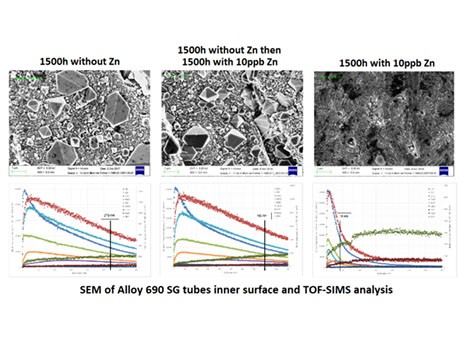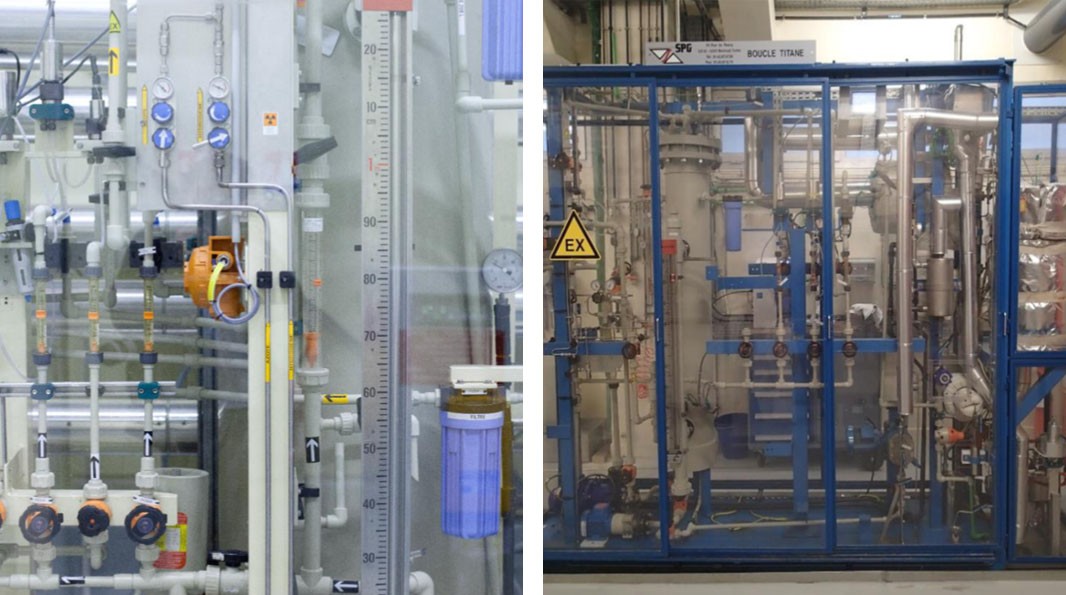The reduction of contamination in the primary circuit of Nuclear Power Plants remains a key challenge for pressurized water reactors.
Water chemistry, hydrogen management, and transient operating phases all influence the release of corrosion products and must be thoroughly understood.
The overall objective of this project is to improve the fundamental understanding of the system, particularly the behavior of various chemical species in the primary circuit, from their source to their final deposition.

What is CHEOPS?
The project is structured to address 5 scientific objectives:
- Oxidation and Release: To improve the understanding and control of corrosion and the release of corrosion products into the reactor coolant system (e.g., from steam generator tubes), as well as the mechanisms of oxide formation and behavior.
- Thermochemistry: To provide a reliable and validated thermodynamic input database to support modeling and predictive tools.
- Zinc: To enhance understanding of the impact of zinc on corrosion processes and contamination control in the primary circuit.
- Particulate Formation and Deposition: To investigate how local and time-dependent chemical conditions influence the formation, growth, and deposition of colloids and particles, and their contribution to radiation fields.
- Primary and Secondary Leakages: To improve understanding of how physical and chemical parameters affect leakages between the primary and secondary circuits.
The project is expected to contribute to several important industrial goals:
- Optimization of primary circuit chemistry
- Reduction of personnel exposure through improved contamination control
- Better understanding of the phenomena that impact plant availability


